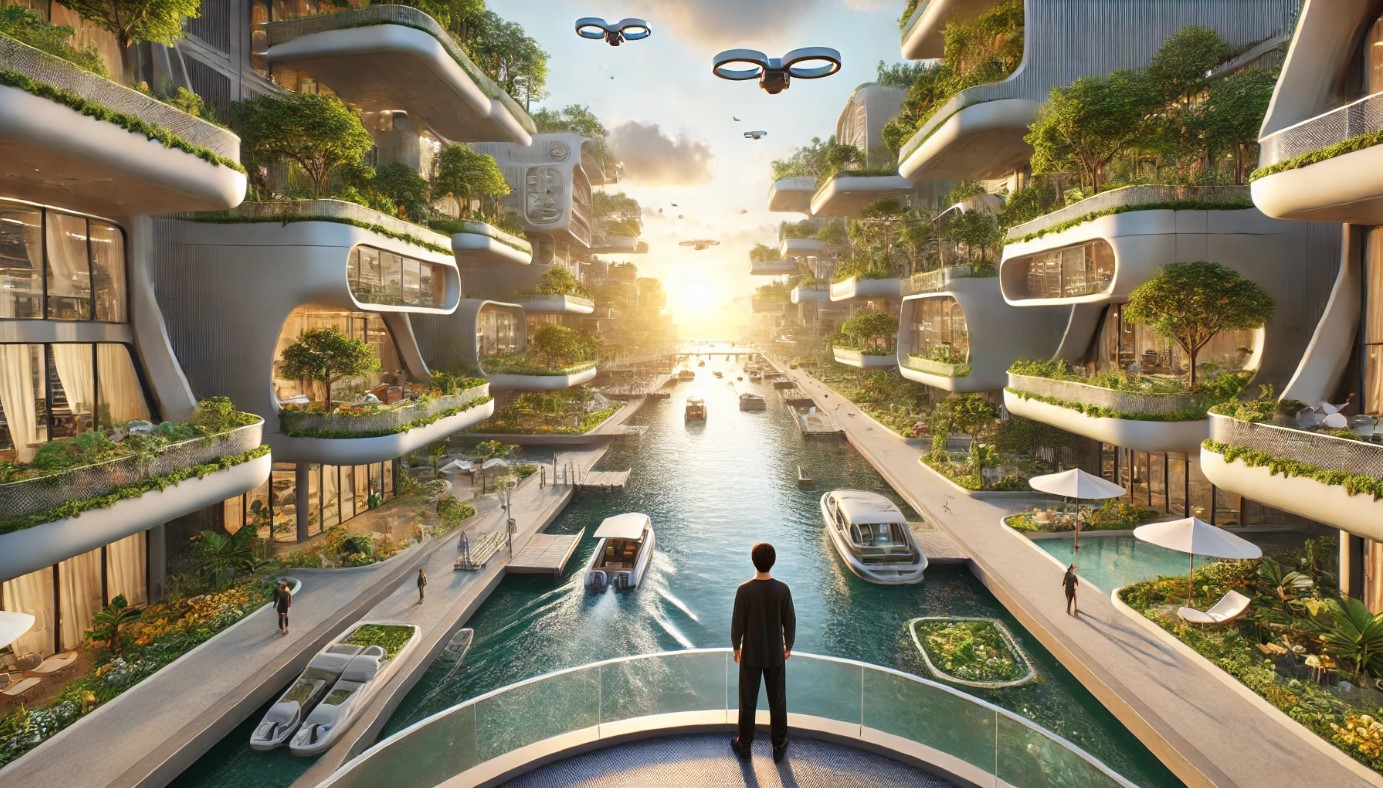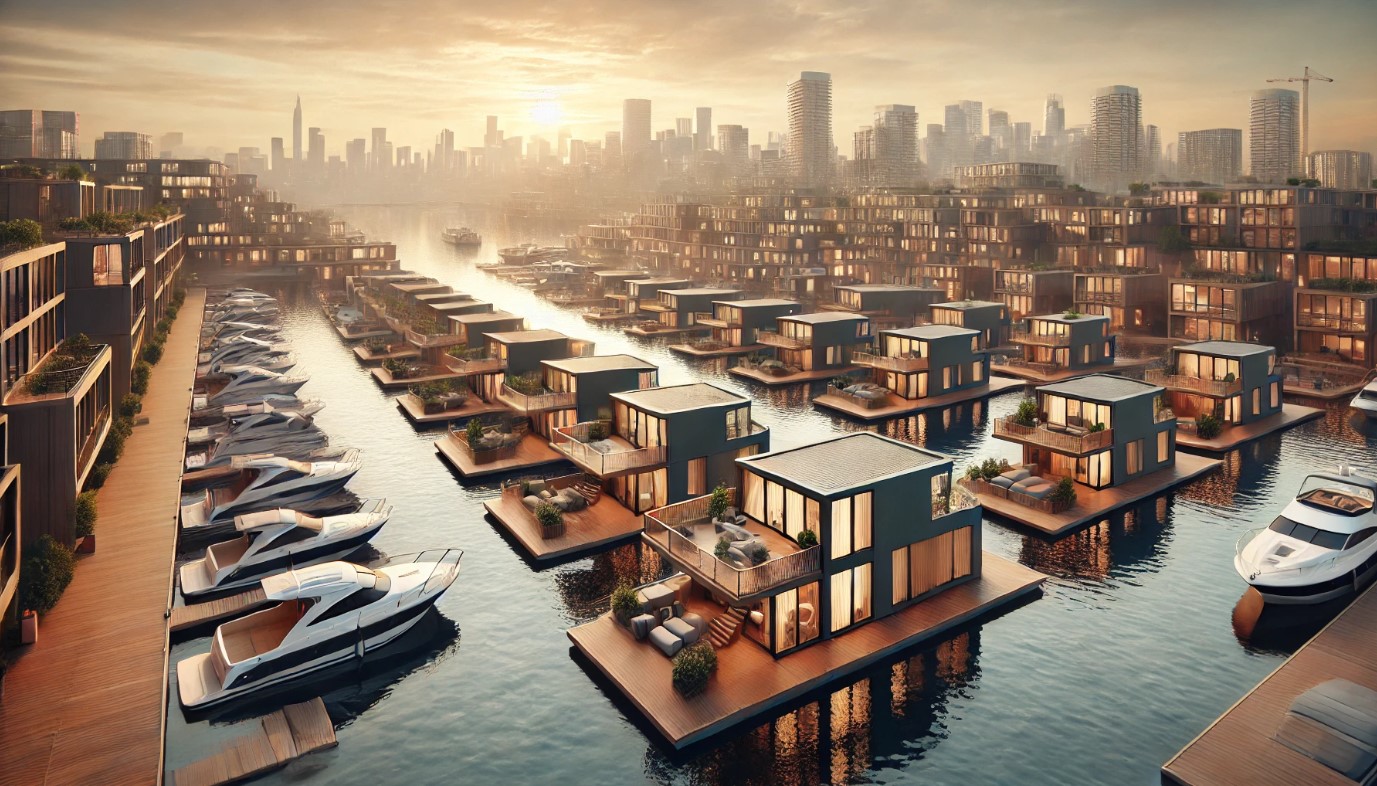The study of ancient water-based communities offers a unique perspective on human adaptability and ingenuity. The various historical examples of such communities across the globe highlight the diverse strategies humans have employed to thrive in aquatic environments. Here, we explore some notable examples and their contributions to sustainable living, architecture, and resource management. These communities not only adapted to their surroundings but also thrived, leaving behind a legacy of innovation and resilience that holds valuable lessons for our modern world.

Mesopotamia: The Cradle of Civilization
The earliest known water-based communities emerged in Mesopotamia, between the Tigris and Euphrates rivers. This fertile crescent provided the ideal conditions for agriculture, leading to the establishment of some of the first human settlements around 5000 BCE. The Sumerians, known for their advanced irrigation systems, exemplified early water management techniques that enabled sustained habitation and growth.

The Nile: Lifeblood of Ancient Egypt
In Egypt, the Nile River was the lifeblood of an entire civilization. Around 3100 BCE, the ancient Egyptians settled along its banks, relying on the annual floods to enrich their soil. They developed intricate systems of canals and basins to manage water resources, supporting agriculture, transportation, and trade. The Nile’s predictable flooding patterns and the Egyptians’ engineering prowess allowed their civilization to thrive for millennia.

Chinampas – The Floating Gardens of the Aztecs, Mexico
In the heart of what was once the Aztec empire, the chinampas stand as a living legacy of pre-Columbian ingenuity. Around the year 1325, the Aztecs established their innovative agricultural system of chinampas on the marshy shores of Lake Tenochtitlan in modern-day Mexico. These floating gardens represented an advanced method of agriculture and sustainable land management, which can be seen as an early form of the hydroponic systems we use today.

The chinampas system involved creating small, rectangular areas of fertile arable land by layering mud and decaying vegetation on top of rafts of reeds. This method allowed the Aztecs to efficiently use the waterlogged terrain for agriculture, supporting a growing population and contributing to the empire’s prosperity.

Ancient China – Yangtze River Delta
The Yangtze River Delta, with its rich history and dynamic waterways, was home to ancient water villages built on stilts. This type of architecture can be traced back to the periods of the Warring States (475-221 BC) and continued through the Tang (618-907 AD) and Song (960-1279 AD) Dynasties. These stilted villages were a testament to the ingenuity of early Chinese civilization in adapting to the river’s seasonal floods.

The economy of these ancient water villages was deeply intertwined with the river, relying on fishing, agriculture, and trade. Modern sustainable architecture and urban planning, particularly in areas prone to flooding, continue to draw inspiration from the principles that guided the construction and organization of these ancient communities.

These stilted villages, reminiscent of today’s iconic destinations like Wuzhen and Zhouzhuang, offer a glimpse into a lifestyle that harmoniously blended human settlement with the aquatic environment.

Pile Dwellings – Lake Constance, Germany
The pile dwellings around the Alps, including those at Lake Constance in Germany, are a remarkable series of prehistoric archaeological sites dating from around 5000 BC to 500 BC. These dwellings highlight the adaptability and ingenuity of early human settlements in Alpine Europe located in six countries around the Alps: Switzerland, Austria, France, Germany, Italy, and Slovenia.

In 2011, 111 of these pile dwelling sites were collectively designated as a UNESCO World Heritage Site, recognized for their outstanding value in showcasing prehistoric human interaction with the Alpine environment. These early communities constructed their homes on stilts over water, effectively managing the challenges of living in flood-prone areas while maintaining access to water resources.

Uru People – Lake Titicaca, Peru
The Uros, believed to have predated the Incan civilization, have origins possibly dating back to before 500 AD. Their existence on floating islands, constructed from the totora reeds that thrive in Lake Titicaca’s shallows, represents an extraordinary adaptation to their environment.

Despite facing significant challenges from environmental changes, the Uru people have shown remarkable resilience. Some have incorporated modern technologies such as solar panels and motorized boats, blending traditional practices with contemporary innovations to enhance their way of life.

Marsh Arabs – Iraq
The Marsh Arabs, or Maʻdān, inhabit the Mesopotamian Marshes in southern Iraq, a region often referred to as the cradle of civilization. Their way of life, traced back to ancient Mesopotamian civilizations around 3000 BC, involves constructing homes, known as mudhifs, from reeds and rushes that flourish in the marshes.

These structures, with their arched roofs, are emblematic of the Marsh Arabs’ deep connection to their environment, showcasing an architectural style that is both functional and sustainable. The marshes provide sustenance and serve as a vital habitat for migratory birds and rich biodiversity, forming the backbone of the Marsh Arabs’ livelihoods.

The Marsh Arabs faced severe disruptions during the late 20th century when large-scale drainage projects initiated by the Iraqi government threatened to destroy the marshes and, with them, the traditional Marsh Arab way of life. Following the fall of Saddam Hussein’s regime, efforts to re-flood and restore the marshlands have been underway, leading to a significant, albeit partial, ecological recovery. The Marsh Arabs, returning to their ancestral lands, are now at the forefront of restoration efforts, working to re-establish their traditional practices while adapting to modern challenges. This revival is not only ecological but also cultural, as the Marsh Arabs strive to reclaim their heritage and rekindle the symbiotic relationship with the wetlands that define their identity.

Buduma People – Lake Chad, Africa
The Buduma are known for their unique way of life around Lake Chad, including the creation of small, floating islands known as “trépangs.” Their adaptation to the environment, which includes reed boats, has allowed them to thrive for centuries.

The Buduma’s presence in the Lake Chad region possibly dates back to as early as the 9th century AD, highlighting their long-standing relationship with the aquatic environment.

Chong People – Tonle Sap Lake, Cambodia
The Chong people of Tonle Sap Lake in Cambodia have developed a way of life intricately linked to the seasonal rhythms of the lake. Their floating villages and fishing practices demonstrate a deep understanding of and adaptation to the aquatic ecosystem.

The floating villages are fully functional communities with schools, temples, and markets, creating a self-sustaining ecosystem that thrives on the water.

The Chong people are currently facing unprecedented challenges due to climate change, habitat destruction, and overfishing, which threaten their traditional way of life and the ecological balance of Tonle Sap. In response, there is a growing emphasis on conservation efforts and sustainable fishing practices within the community. Educational programs aimed at younger generations highlight the importance of preserving their cultural heritage and the lake’s biodiversity. The Chong’s resilience and adaptive strategies offer valuable lessons in sustainable living and community-based conservation efforts, crucial for the long-term health of Tonle Sap and its inhabitants.

Intha People – Inle Lake, Myanmar
The Intha, meaning “sons of the lake,” reside in stilt houses scattered along the shallow waters of Inle Lake in Myanmar’s Shan State. This serene lake, surrounded by mountains, provides a picturesque setting for the unique lifestyle of the Intha.

Their iconic leg-rowing technique, where fishermen skillfully maneuver their boats using one leg, is a distinctive cultural trait and a symbol of their identity. This method allows for hands-free fishing and is adapted to the dense aquatic vegetation and narrow waterways of the lake, showcasing an innovative approach to navigating their environment.

The Intha are renowned for their floating gardens, where they grow a variety of vegetables and flowers on beds made from lake vegetation and anchored by bamboo poles. This ingenious form of aquaculture maximizes the limited arable land and provides a significant portion of the produce for the region. Apart from agriculture, the Intha are skilled in traditional crafts, including silk weaving and silverwork, which are highly valued and contribute to the local economy. These crafts are not only a source of income but also an important aspect of cultural preservation and identity.

Nzulezu – The Village on Stilts, Ghana
Nzulezu, perched above the tranquil waters of the Amansuri Lagoon in Ghana’s Western Region, is a unique village elevated on stilts, deeply rooted in Nzema culture where “Nzulezu” means “surface water.”

This settlement traces its origins to the ancient Ghana Empire, with lore attributing its founding to a snail that led its founders to this serene location, giving the mollusk sacred significance. Fishing is the lifeblood of the community, while the lagoon’s waters facilitate transportation and communication.

This symbiotic relationship with the aquatic environment fosters a sustainable way of life and captivates tourists with its cultural richness and architectural ingenuity. Despite challenges like securing freshwater and accessing education, Nzulezu integrates modern amenities while preserving its environmental and cultural legacy, standing as a testament to sustainable living and human resilience.

Phumdis – Loktak Lake, India
The Phumdis of Loktak Lake in Manipur, India, represent a unique way of life for communities on these floating islands. Loktak Lake, the largest freshwater lake in Northeast India, features phumdis—heterogeneous masses of vegetation, soil, and organic matter.

These floating islands vary in size and support unique agricultural practices known as “phumdi cultivation,” where crops like rice and vegetables are grown. Fishing is a significant livelihood, with traditional methods utilized in the lake’s intricate network of phumdis.

Some communities have built dwellings on larger phumdis, emphasizing a harmonious coexistence with the lake ecosystem. The phumdis hold cultural significance, influencing traditional practices, festivals, and rituals, and showcasing a remarkable adaptation to their unique environment.

Water Villages of Ganvié – Benin
The Water Villages of Ganvié, located on Lake Nokoué in Benin, are often called the “Venice of Africa” due to their network of stilt houses and canals. Built in the 16th or 17th century by the Tofinu tribe to escape the slave trade, Ganvié is home to about 20,000 people.

Residents live in stilt houses made from local materials and engage in fishing, agriculture, and commerce, with a bustling floating market as a central hub.

Canoes are the primary mode of transportation, essential for navigating the waterways. Despite facing environmental challenges, Ganvié showcases the resilience and vibrant culture of its community, attracting visitors and researchers alike.

Bajau Sea Nomads – Southeast Asia
The Bajau Sea Nomads, often called “Sea Gypsies,” have a rich maritime heritage in Southeast Asia, particularly around the Sulu and Celebes Seas. Known for their nomadic lifestyle, they live on houseboats called “lepa-lepa” or in stilt houses above the water, allowing them to follow seasonal marine life and adapt to environmental changes.

These houseboats, crafted from bamboo and wood, support their mobile lifestyle and reliance on the sea for sustenance. Fishing is central to Bajau life, with renowned free-diving skills for spearfishing and netting. Their profound cultural connection to the sea includes marine rituals and ceremonies, reflecting deep respect for the ocean.

Despite challenges like overfishing and environmental degradation, the Bajau demonstrate resilience, maintaining traditional ways and adapting to modern pressures. Their oral traditions, stories, and sea-related ceremonies preserve their cultural heritage, showcasing a unique and enduring relationship with the marine environment.

Kampong Ayer, Brunei
The world’s largest floating village, located in Bandar Seri Begaway, is quite unlike others in Southeast Asia as it’s more of a sprawling mini-metropolis than a village. An impressive 38 km (23.6 mi) of wooden and concrete boardwalks connect about 40 villages, with speedboats to carry passengers, the police force, and the fire brigade along the canals.

Timber houses on stilts sit next to mosques, schools, and restaurants, and everyone has access to electricity, running water, and television. There’s even Wi-Fi available throughout! Bajau Sea Nomads reportedly built houses above the Brunei River more than 1,000 years ago. Over the centuries, this floating community expanded into a series of villages and neighborhoods, home to both wealthy nobles and peasants.

Then… there are few that can’t be considered as ancient or historic, but Hey!!! It’s on water. It’s cool to be mentioned here. Right?
Aberdeen, Hong Kong
Once a thriving hub of floating activity, Aberdeen in Hong Kong still enchants tourists despite its decline. Established in the 17th century as an important harbor, Aberdeen features a striking contrast between local fishermen’s floating homes and the towering skyscrapers behind them. Visitors can enjoy boat rides, stunning views, and dine at several floating restaurants serving fresh local seafood.

Among these was the famous Jumbo Floating Restaurant, known for its grand design resembling a traditional Chinese palace. Sadly, in 2022, the restaurant capsized while being towed away, marking the end of an iconic landmark.

Koh Panyi, Damnoen Saduak, Amphawa Floating Market, Taling Chan & Khlong Lat Mayom; Thailand
Koh Panyi, a floating village in Phang Nga Bay, Thailand, is home to over 1,500 people descended from two Muslim families who fled Indonesia 200 years ago. The village, built on stilts, includes a school, market, mosque, and a soccer field made from old wood and fishing rafts.

Floating markets, a major attraction in Thailand, surround Bangkok. The Damnoen Saduak floating market, about 100 km from Bangkok, offers local produce, traditional foods, and handmade goods.

The Amphawa floating market, 90 km from the capital, features Thai houses, fruits, vegetables, desserts, and souvenirs.

Taling Chan and Khlong Lat Mayom markets, closer to Bangkok, provide traditional Thai cuisine, local produce, and unique boats, showcasing Thai culture and gastronomy.

Ha Long Bay & Phong Dien, Vietnam
Ha Long Bay’s floating settlement, set among limestone karsts in turquoise waters, consists of four villages with about 1,600 people. Originating as a place for fishermen to sell their catch, it has evolved into self-sufficient societies thriving on fishing and marine aquaculture. The residents’ lives are intrinsically tied to the water, with boats and floating homes providing shelter, transportation, culture, and livelihood. UNESCO has designated the area a World Heritage site.

On the Mekong River delta, the Phong Dien floating market features traditional boats selling exotic local produce. Early morning commercial activity is frantic, with typical fruit, vegetables, and food as the main products, and market sellers dressed in traditional costume and Vietnamese hats.

Lok Baintan, Indonesia
Lok Baintan floating market in South Kalimantan, Indonesia, is situated on the Martapura River near Banjarmasin. You’ll find hundreds of boats here, all stuffed with farming produce and typically Indonesian food including fruit, vegetables, juices, and meat!

A 500-year-old ritual happens here at sunset, when over 100 boats gather together on the waters to witness the closing of the day.

Raft Houses – Lake Bokodi, Hungary
The raft houses on Lake Bokodi in Hungary offer a unique waterfront living experience, with homes built on floating platforms. This picturesque setting provides residents with panoramic lake views and a serene environment.

The raft houses range from cozy cabins to modern structures, allowing for diverse living arrangements. Residents enjoy various water-based activities such as boating and fishing.

The houses adapt to seasonal changes, from frozen winters to vibrant springs and summers. Often part of floating neighborhoods, these raft houses foster a sense of community and exemplify a harmonious relationship with nature.

(Some modern mentions should be the luxury resorts built on water in places like the Maldives, Bora Bora, Fiji, and Bali for leisure purposes. However, our primary focus for this article is about the communities living on water. So, have not included them here.)
Lessons for the Future
As we face environmental challenges and rapid urbanization in the 21st century, ancient water-based communities offer profound lessons. Their sustainable practices, such as natural resource management and resilient architecture, resonate today more than ever. In an era grappling with climate change and sea-level rise, these historical examples urge us to reconsider how we interact with water.
1. Sustainable Living: Ancient communities prioritized sustainability by integrating their lifestyles with natural ecosystems. Their practices, from fish farming to water purification techniques, minimized environmental impact and promoted long-term resilience.
2. Adaptive Architecture: Innovations in floating and stilted architecture demonstrate the flexibility needed to thrive in dynamic water environments. These designs could inspire contemporary solutions for flood-prone areas and rising sea levels, promoting adaptive urban planning and infrastructure development.
3. Community Resilience: Water-based communities fostered strong social bonds and communal resilience. Their cooperative spirit in managing shared resources can inform modern governance models and community-building efforts, encouraging inclusive development and equitable access to water.
Looking Ahead
As we reflect on the legacy of ancient water-based communities, we recognize their enduring relevance in shaping sustainable futures. By drawing inspiration from their innovative spirit and adaptive practices, we can forge a path towards resilient urbanization and harmonious coexistence with our aquatic environments. The journey from ancient riverbanks to modern waterfront cities invites us to embrace water not just as a resource, but as a catalyst for holistic development and a symbol of our interconnected world.
In exploring the rich tapestry of human history on water, we find not just a chronicle of civilizations past, but an inspiring hope for generations to come—a proof to our capacity to thrive in harmony with nature and each other.




